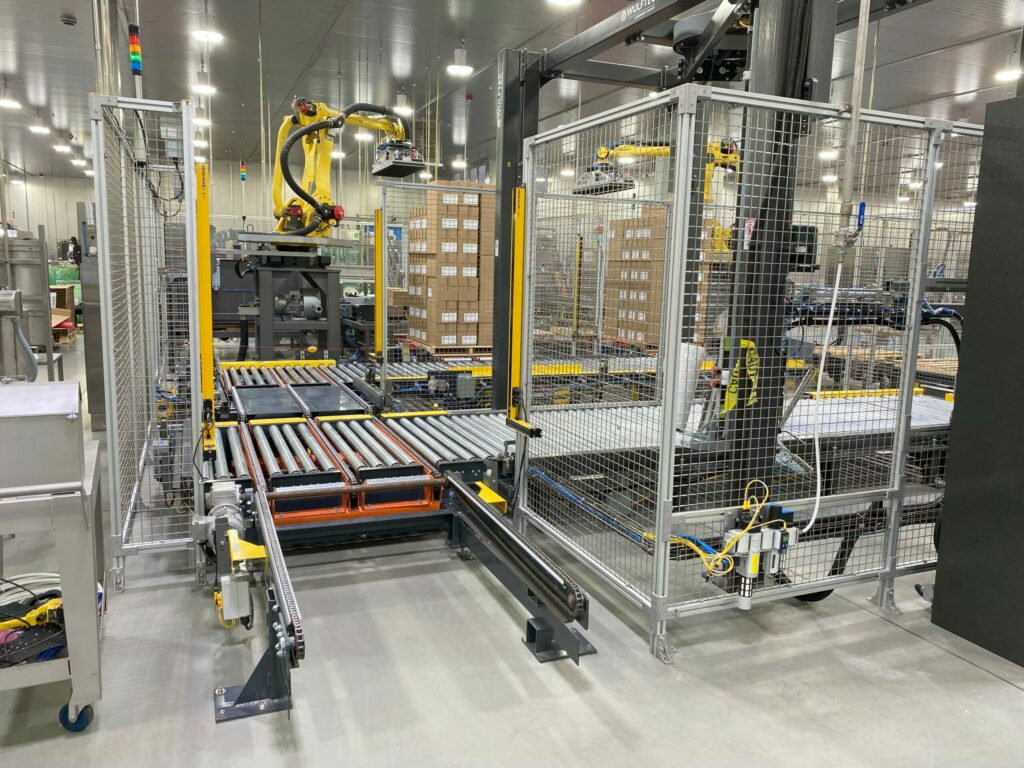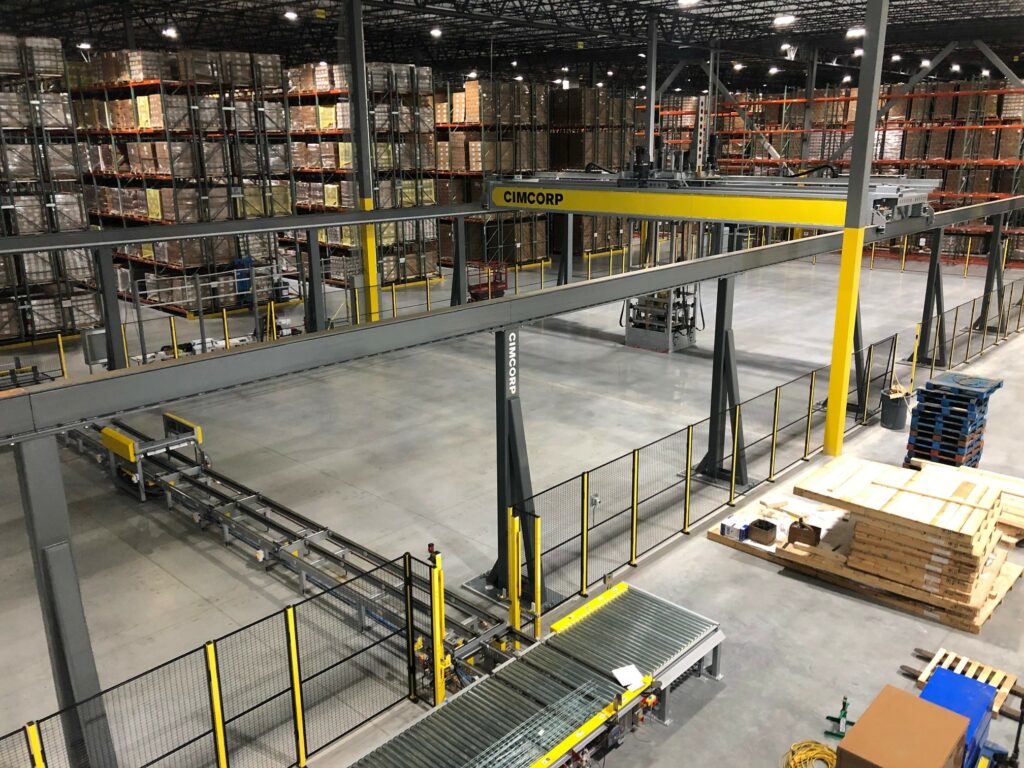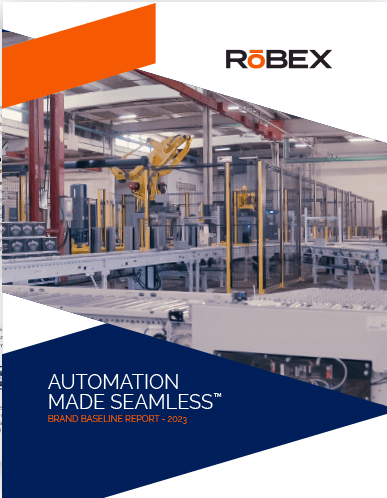Robots in Manufacturing
Industrial robots are programmable machines designed to carry out tasks without direct human intervention. These industrial robot applications frequently complete repetitive or complex tasks throughout many manufacturing operations. Each type of robot has its own degrees of freedom and abilities that make it suitable for different tasks.
are programmable machines designed to carry out tasks without direct human intervention. These industrial robot applications frequently complete repetitive or complex tasks throughout many manufacturing operations. Each type of robot has its own degrees of freedom and abilities that make it suitable for different tasks.
Industrial robots are used in automotive production, manufacturing, food packaging, and other industries. They are commonly used for applications such as spot welding, painting, machine loading, palletizing, and material handling.
As technologies continue to evolve, the adoption of industrial robots is expected to increase, enabling large-scale industrial robots and autonomous vehicles in harsh environments where worker safety is a concern.
Common Industrial Robot Applications
As technology advances, the range of industrial robot applications continues to expand, driving the adoption of industrial robots in more and more industries. Below are some of the most common industrial robot applications.
Spot and Arc Welding
Spot welding and arc welding are two important applications of industrial robots in the manufacturing industry. Spot welding robots are commonly used to weld small metal parts, such as those for assembling vehicles in the automotive industry. Arc welding robots are ideal for welding larger metal structures with complex geometries. Robots in welding help companies meet production targets, improve finished product quality, and remain competitive.
Material Handling
 In manufacturing, robots have been developed to handle all kinds of materials, from small and lightweight components to increasingly heavy objects. Material handling robots are used to piece together individual parts of more complex products. Implementing robots for material handling robots can also improve safety in the workplace. Workers no longer need to engage in repetitive and physically taxing tasks, reducing the risk of injury. Additionally, robotic technologies allow for standardized processes and increased efficiency.
In manufacturing, robots have been developed to handle all kinds of materials, from small and lightweight components to increasingly heavy objects. Material handling robots are used to piece together individual parts of more complex products. Implementing robots for material handling robots can also improve safety in the workplace. Workers no longer need to engage in repetitive and physically taxing tasks, reducing the risk of injury. Additionally, robotic technologies allow for standardized processes and increased efficiency.
Machine Tending
With the growing need for efficiency and worker safety, machine tending is becoming increasingly popular in the manufacturing industry. Machine tending robots load and unload materials into other machines, such as lathes and milling machines. Robot arms with articulated joints can handle complex tasks such as part positioning, orientation, and insertion into a machine. Industrial robot vacuums can remove unwanted material such as dust, debris, or metal shavings from the work area.
Painting
Robotic painting machines are becoming increasingly popular in industrial settings such as automotive, aerospace, and construction. Robotic painting machines allow for precise and even application of paints, coatings, and finishes. They are also capable of painting complex shapes and surfaces that may be difficult for human workers to reach.
Picking, Packing, and Palletizing
Robotic picking machines can be programmed to identify and select specific items based on size, weight, and shape. Packing robots can then place these items into containers or boxes consistently and efficiently. Robotic palletizers then place the containers onto appropriate platforms for shipping. The automotive, food, and retail industries have already widely adopted robotic picking, packing, and palletizing machines in their production lines.
Assembling
Assembly robots are commonly used in automotive and electronics assembly, where precision and speed are crucial. These robots are equipped with articulated arms that provide flexibility and freedom of movement. This allows them to handle a wide range of complex tasks, including machine loading, spot welding, and laser welding. Similarly, these robots can be programmed to handle unwanted material and filler material for various products.
Mechanical Cutting
In an industrial setting, robotic mechanical cutting is useful for applications such as sheet metal fabrication, trimming plastics, and cutting fabrics and other materials. Robots can be programmed to cut along specific lines and easily create intricate designs. They can be used for straight cuts, curves, and complicated shapes. Manufacturers can choose from different types of robotic arms depending on their requirements.
Grinding, Deburring, and Polishing
Grinding applications involve removing unwanted material from a workpiece while deburring tasks involve removing rough edges or burrs. Polishing applications provide a finishing touch to the surface of finished products. Manufacturers can avoid costly reworks by utilizing robotic deburring technologies for these tasks to deliver a more consistent and high-quality result.
Gluing, Adhesive Sealing, Spraying
Robotic gluing, sealing, and spraying is a significant industrial robotic application that is used to apply adhesives or protective coatings in precise quantities. Robots can be programmed to apply adhesives and sealants consistently and accurately, ensuring that finished products have a uniform appearance. These robots are commonly preferred over traditional gluing or sealing methods that involve human workers due to the accuracy, waste reduction, and consistency of the process. Robotic gluing can be employed in numerous industries, including automotive, electronics, and medical device manufacturing.
Other Robotic Technologies & Complex Task Applications
In addition to the common industrial robot applications like spot welding, milling, and palletizing, multiple other robotic technologies and complex task applications are gaining traction in the industrial world. One example is autonomous vehicles used for material transport within factories and warehouses. As industries continue to adopt industrial robotics, the list of available applications will only grow with the constant advancement of robotic technologies.
How RōBEX Can Help
Robotics can be designed and integrated in many useful ways to increase efficiency and safety. At RōBEX, we welcome the opportunity to build a custom system to
upgrade your robotic safety standards and meet whatever manufacturing challenges you are facing.
If you are ready to introduce more robust automation technologies into your manufacturing assembly line, we are an automation company you can trust.
In order for your process and workforce to operate more efficiently, we can help implement the finest industrial, collaborative, and autonomous mobile robots.
Learn more about our full-range of services by downloading this free eBook: RōBEX Brand Guide: Automation Made Seamless.
From battery assembly to aerospace/automotive assembly automation, we tailor our approach to meet your needs. No matter the size of your business, our experts will work with you to find the most effective system to streamline your process and increase your productivity.
Contact us to learn more about the RōBEX approach and how we can help.

 In manufacturing, robots have been developed to handle all kinds of materials, from small and lightweight components to increasingly heavy objects.
In manufacturing, robots have been developed to handle all kinds of materials, from small and lightweight components to increasingly heavy objects. 